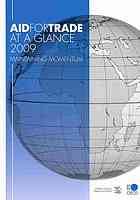

Most ebook files are in PDF format, so you can easily read them using various software such as Foxit Reader or directly on the Google Chrome browser.
Some ebook files are released by publishers in other formats such as .awz, .mobi, .epub, .fb2, etc. You may need to install specific software to read these formats on mobile/PC, such as Calibre.
Please read the tutorial at this link: https://ebookbell.com/faq
We offer FREE conversion to the popular formats you request; however, this may take some time. Therefore, right after payment, please email us, and we will try to provide the service as quickly as possible.
For some exceptional file formats or broken links (if any), please refrain from opening any disputes. Instead, email us first, and we will try to assist within a maximum of 6 hours.
EbookBell Team

0.0
0 reviewsNumerous barriers prevent developing countries - in particular the least developed - from taking advantage of trade opportunities that could help them reduce poverty. The Aid-for-Trade Initiative has successfully built awareness of the support these countries need to surmount these barriers. As a result, more and more developing countries are raising the profile of trade issues in their development strategies and donors are responding by increasing the resources they provide to build trade capacity in areas such as policy, institutions and infrastructure. This aid-for-trade monitoring report - the second of its kind - documents the success of the initiative to date. It examines trends and developments and presents a comprehensive analysis of donor and partner country engagement. In addition, it addresses the regional dimension of aid for trade and showcases three cross-border infrastructure projects. Finally, the report provides fact sheets that help in assessing the outcomes and impacts of aid for trade. The main conclusions are positive. Nonetheless, the outlook is affected by the current global economic crisis. Aid for trade is now, and more than ever, essential to help suppliers from developing countries build capacity and penetrate global markets. The key message of the report is clear: aid for trade must remain an essential component of development assistance. It offers a number of steps, in this respect, that can advance the aid-for-trade dialogue.